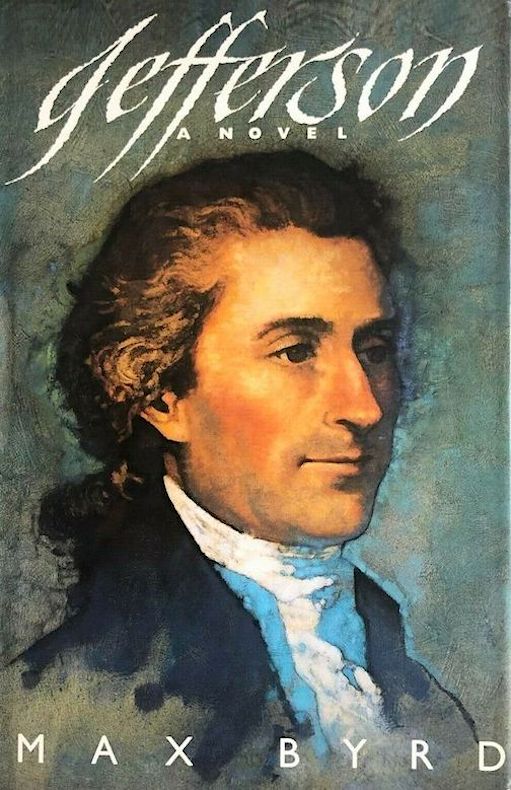WILDERNESS is the only book I've read by bestselling author Robert B. Parker. However, at the insistence of my wife, a longtime Spencer fan, it won't be the last. Ideally she would have me read Promised Land next, Parker's 1976 Edgar Award winning fourth Spencer novel, to better gauge the positioning of Wilderness, a non-series, standalone novel published by Delacorte Press in 1979. Because, while Wilderness is ostensibly a powerful story about found courage (some would say forced), and styled by crisp dialogue and brutal action, it still reads for the most part like a lesser rehash of James Dickey's 1970 novel, Deliverance. In truth, I was more impressed with the cover art than I was with the story. My wife, though, remains confident that any further reading of Parker will turn me into a fan. We shall see.
A paperback reissue from Dell, regurgitating the knife, circa late 1980's or early 1990's.
Bonus Cover: Paul Bacon produced the jacket art on the first hardcover edition of Promised Land, which Houghton Mifflin published in 1976. I've been trying to locate a copy of the first paperback edition, or even a good image of it, for quite some time now but to no avail. I'll keep looking though, and if I find one I'll post it in accordance.
"Rejoice, Parker fans! Spenser--the gutsy hero of the Godwulf Manuscript, God Save the Child, and Mortal Stakes-- is breaking all the rules again, and when his newest adventure leads him to summertime Cape Cod he forgets the private investigator's first law: Don't make waves. He's supposed to be looking for a runaway wife, but the hunt soon embroils both Spenser and his friend Susan Silverman in an assortment of fools and villains with extortion, bank robbery, and murder on their minds. The result is another witty, acerbic tale in the great Spenser tradition--a treat as artfully prepared as one of his gourmet masterpieces."
Pocket published Jeffrey Archer's bestselling thriller, A Matter of Honor, in mass-market paperback in 1987. Dudash produced the cover art.
"It is 1784, and Jefferson, the newly appointed American ambassador to the court of Louis XVI and Marie-Antoinette, has just arrived in Paris to represent his fledgling nation. It is a city adrift in intrigue, upheaval, and temptation, a city that will challenge Thomas Jefferson's principles, incite his passions, and change him forever. Through the eyes of William Short, Jefferson's young secretary and avid protege, we peer into the private and public life of the future president, watching the forces that shape the young Thomas Jefferson as he builds his dream of an America with fellow patriots John Adams and Ben Franklin, and as he struggles between political ambition and an unexpected crisis of the heart with a woman who has the power to destroy him. Jefferson offers a rare glimpse behind the face of the complex Virginian showed the world. Subject to periods of dark melancholy, cold anger, and interludes of romantic intimacy, Thomas Jefferson committed acts of exquisite mercy and profound ruthlessness. Here, we encounter the rumors of misconduct that dogged him in his rise to power, his bitter feuds with political opponents Patrick Henry and Aaron Burr, and the pivotal role he played in the bitter War of Independence."
Brittle Innings was yet another of author Michael Bishop's brilliant additions to the world of literature. Dudash produced a very evocative jacket illustration to coincide with the novel's evocative, circa 1940's era of professional farm-club baseball. Bantam Books published this in hardcover in 1994.
"From the sandlots of Compton, California to the most exciting team professional baseball ever fielded, Duke Snider's 18 years in the major leagues encompass a glorious era of baseball that will never be seen again. During a playing career that touched three decades, Edwin Donald Snider graced centerfield at Ebbets Field and later Chavez/Ravine's Dodger Stadium, collected over 2000 hits and crushed more than 400 home runs over major league fences. But The Duke of Flatbush is far more than a Hall of Famer's personal retrospective of a superb major league career. Duke Snider is the first member of the 1950s Dodgers to take a close, personal look at his teammates on the extraordinary Brooklyn team--a team that always entered autumn so full of hope, only to find catastrophe. Here are indelible images of the boys of summer who became a symbol of baseball--and America itself--in the '40s and '50s: Pee Wee at shortstop with his arm around Jackie's shoulders... Skoonj throwing out runners at third... Brooklyn fans hollering "Oisk!"... Leo kicking dirt at umpires... Campy chirping, "Same team that won yesterday is gonna win today!"... Gil taking the trow at first for the last out. For the Duke of Flatbush, and everyone else lucky enough to be young in that special time: Ebbetts Field still stands... the Brooklyn Dodgers still live!"












